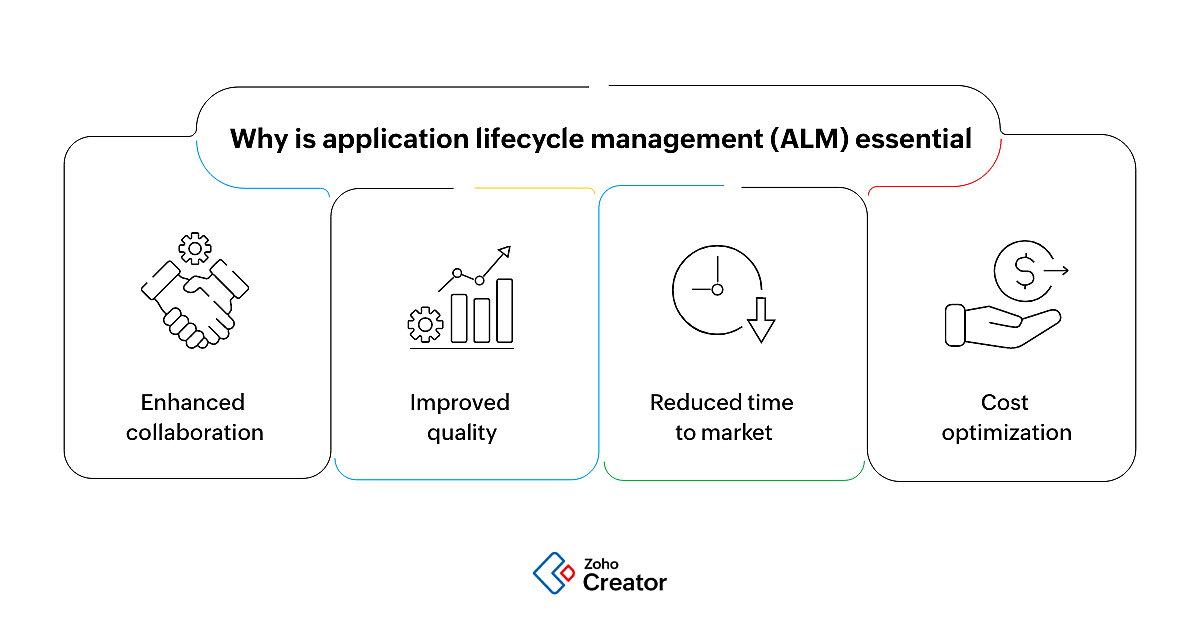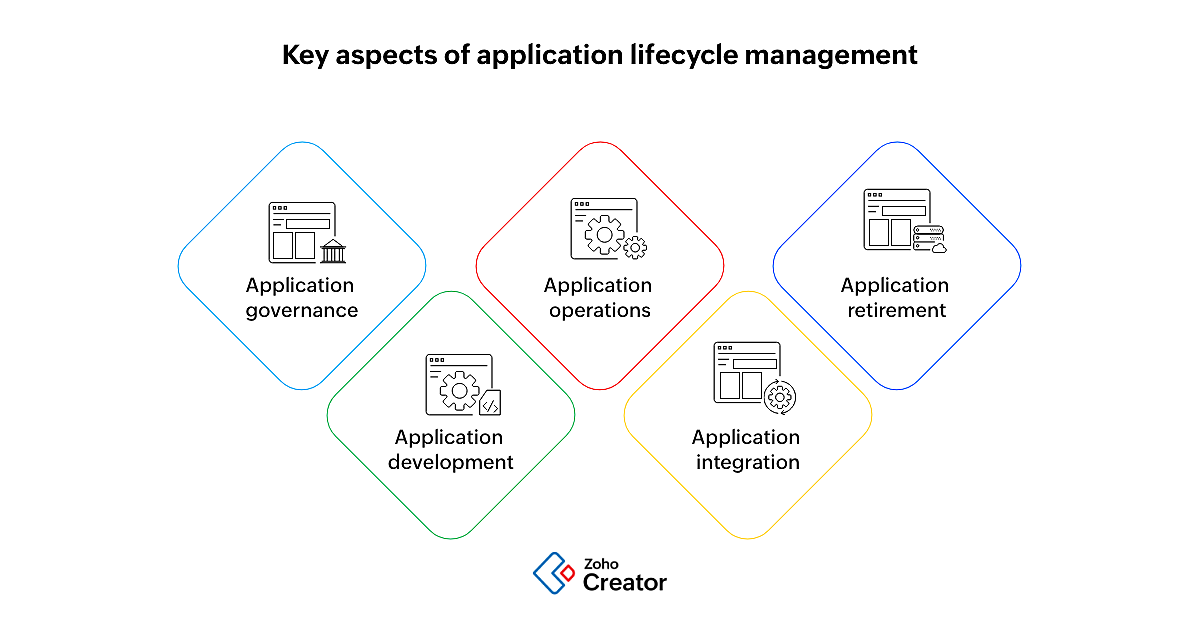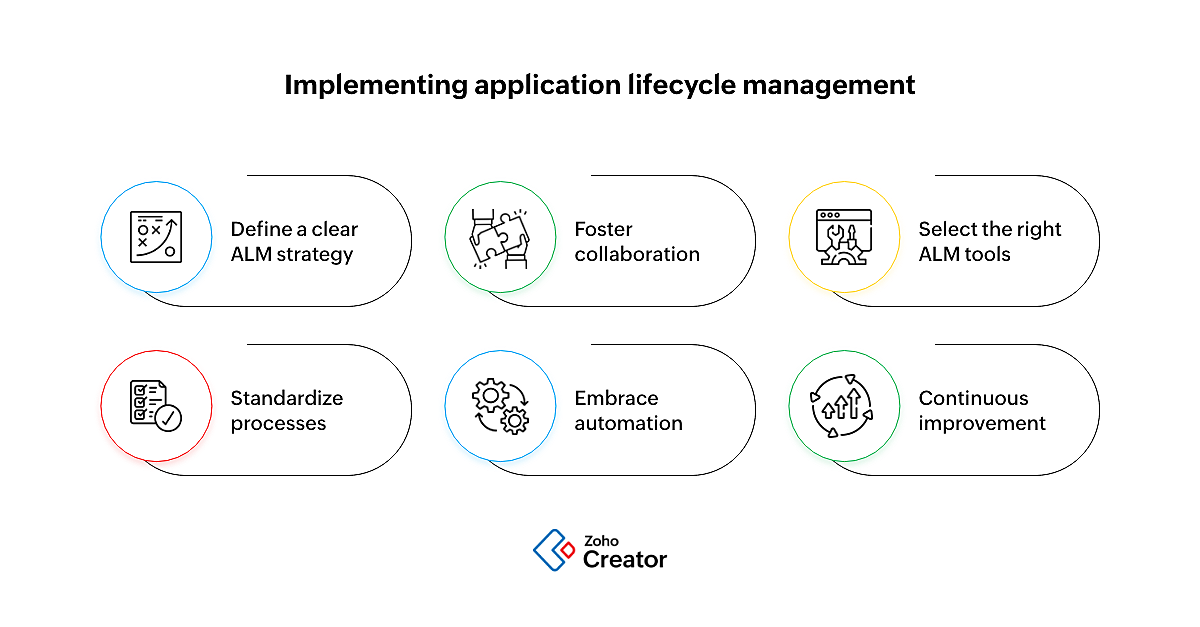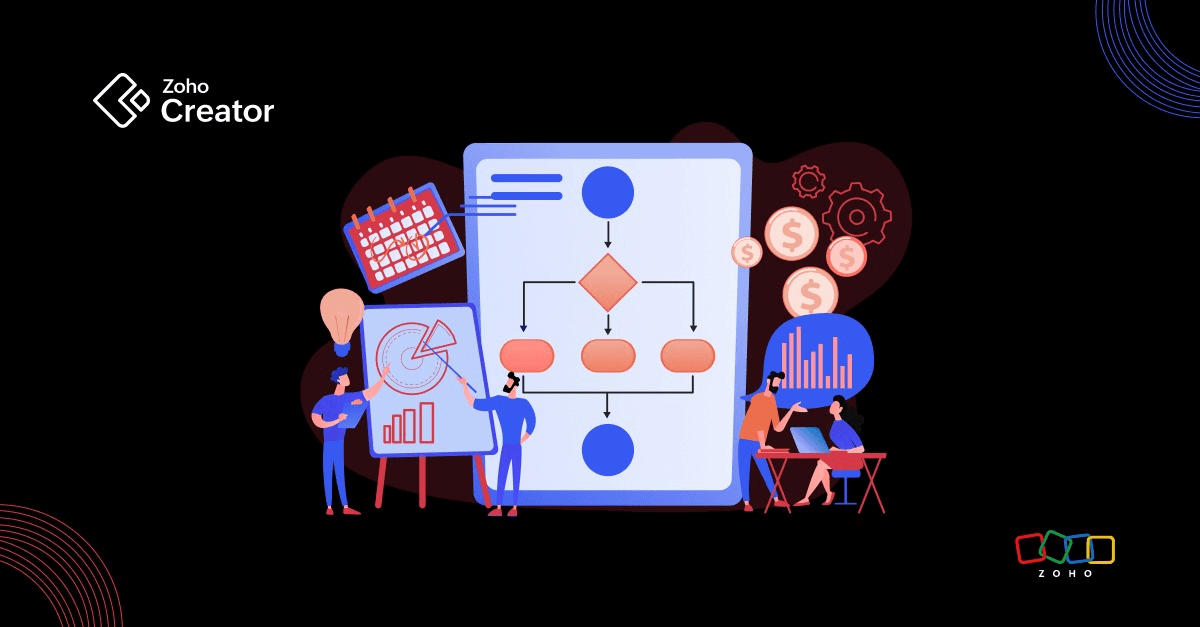- HOME
- Know Your Tech
- An introduction to application lifecycle management (ALM): What it is and why it's important
An introduction to application lifecycle management (ALM): What it is and why it's important
- Last Updated : August 11, 2023
- 1.7K Views
- 5 Min Read
Businesses are constantly striving to stay competitive by delivering high-quality software applications in today's competitive tech landscape. To achieve this, organizations must effectively manage the entire lifespan of an application, from conception to retirement. This is where application lifecycle management (ALM) comes into play.
ALM is a set of practices, tools, and processes designed to streamline and optimize the development, maintenance, and overall lifecycle of software applications. In this blog post, we'll dive into the world of ALM—exploring its importance, comparing it to similar methodologies, and highlighting its key aspects.
What is ALM?
At its core, ALM is a comprehensive approach to managing the complete lifecycle of software applications. It comprises a wide range of activities, including requirements gathering, development, testing, deployment, maintenance, and retirement. ALM focuses on aligning business goals with the software development process, ensuring that applications are delivered on time, within budget, and with the desired level of quality.
Why is ALM essential?
Effective ALM practices are important for numerous reasons:
- Enhanced collaboration: ALM facilitates collaboration among different teams involved in the application development process, including developers, testers, business analysts, and project managers. By providing a centralized platform for communication and coordination, ALM enables cross-functional teams to work together seamlessly.
- Improved quality: The use of best practices and standardized processes are emphasized throughout the application lifecycle in ALM. By following a systematic approach to development, organizations can identify and rectify issues early on, resulting in higher-quality applications.
- Reduced time to market: By streamlining the development process, ALM enables organizations to release applications more quickly. By automating repetitive tasks, integrating tools, and improving efficiency, ALM helps reduce the time required for development, testing, and deployment.
- Cost optimization: Organizations can optimize their resources and minimize unnecessary expenses with ALM. By providing visibility into the entire development lifecycle, ALM allows organizations to identify bottlenecks, eliminate redundant processes, and make informed decisions about resource allocation.

How does ALM compare to similar methodologies?
While ALM focuses specifically on managing software applications, it's often compared to other related methodologies, such as the software development lifecycle (SDLC) and product lifecycle management (PLM).
Software Development Lifecycle (SDLC)
SDLC is a framework that outlines the different stages involved in software development, including requirements gathering, design, development, testing, deployment, and maintenance. ALM can be seen as an extension of SDLC, encompassing not only development but also broader application lifecycle management activities. While SDLC focuses on the technical aspects of software development, ALM takes a more holistic approach by considering the business objectives, governance, and operational aspects of applications.
Product Lifecycle Management (PLM)
PLM, on the other hand, focuses on managing the lifecycle of physical products. It encompasses activities ranging from concept and design to manufacturing, distribution, and disposal. While ALM and PLM share some similarities in terms of managing lifecycles, they differ in scope. ALM is specific to software applications, whereas PLM caters to physical products. However, organizations that develop both software and physical products can benefit from integrating ALM and PLM practices to manage their entire product portfolio effectively.
Key aspects of application lifecycle management
Application governance: To ensure applications align with organizational goals and meet regulatory requirements, application governance establishes policies, standards, and processes. It encompasses defining development methodologies, implementing change management procedures, and mitigating risks while maintaining compliance.
Application development: From requirements gathering to release, app development covers the entire process of designing, coding, testing, and launching applications. This involves activities such as architectural design, unit testing, integration testing, and user acceptance testing. ALM provides a collaborative framework and tools for efficient code repository management, automated builds, issue tracking, and enhancement management.
Application operations: After deployment, application operations focus on managing and maintaining applications. This includes monitoring performance, handling incidents and service requests, applying updates and patches, and ensuring high availability and reliability. ALM integrates operations processes into the application lifecycle, enabling proactive management and support throughout the application's lifespan.
Application integration: In today's interconnected world, applications rarely exist in isolation. They often need to interact with other systems, databases, and APIs. ALM recognizes the importance of application integration and provides tools and practices to ensure seamless integration with existing systems. This involves designing and implementing robust interfaces, managing data flow, and ensuring compatibility and interoperability with other applications.
Application retirement: Just as applications have a lifecycle that begins with development, they also reach a stage where they become obsolete or are no longer needed. ALM includes processes for retiring applications in a structured and controlled manner. This involves assessing the impact of retiring an application, migrating data, decommissioning infrastructure, and managing dependencies to ensure a smooth transition or replacement of the application.
 Implementing ALM
Implementing ALM
Implementing ALM effectively requires a combination of people, processes, and tools. Here are some key considerations for organizations looking to adopt ALM practices:
- Define a clear ALM strategy: Start by defining your organization's ALM strategy, including the desired outcomes, objectives, and key performance indicators. Identify the processes and tools that align with your business goals and support your development practices.
- Foster collaboration: Encourage cross-functional collaboration and communication between different teams involved in the application lifecycle. Establish a shared understanding of roles, responsibilities, and processes to facilitate smooth handoffs and minimize delays.
- Select the right ALM tools: Choose ALM tools that align with your organization's needs and processes. Look for features such as requirements management, version control, build automation, testing frameworks, and deployment automation. Evaluate tools based on their integration capabilities, ease of use, scalability, and support.
- Standardize processes: Define and implement standardized processes throughout the application lifecycle. This includes requirements gathering, change management, testing, deployment, and operations. Standardization promotes consistency, reduces errors, and improves efficiency.
- Embrace automation: Leverage automation wherever possible to streamline repetitive tasks, improve accuracy, and accelerate the development process. Automation tools can help with code compilation, testing, deployment, and monitoring, allowing teams to focus on high-value activities.
- Continuous improvement: ALM is an iterative process. Continuously evaluate and improve your ALM practices based on feedback, metrics, and lessons learned. Encourage a culture of continuous learning and innovation within your development teams.

Conclusion
To compete in a fast-paced digital world, organizations must effectively manage the complete lifecycle of their software applications. ALM provides a structured approach to achieve this, encompassing application governance, development, operations, integration, and retirement.
By adopting ALM practices, businesses can enhance collaboration, improve quality, reduce time to market, and optimize costs. With the right strategies, processes, and tools in place, organizations can successfully navigate the complexities of the application lifecycle and deliver high-quality applications that meet the needs of their users and drive business success.
 Stephen
StephenStephen is a product marketer at Zoho Creator. An avid writer, he plies his trade evangelizing low-code during the day and pens songs at night. Sneakerhead and sushi enthusiast too.



